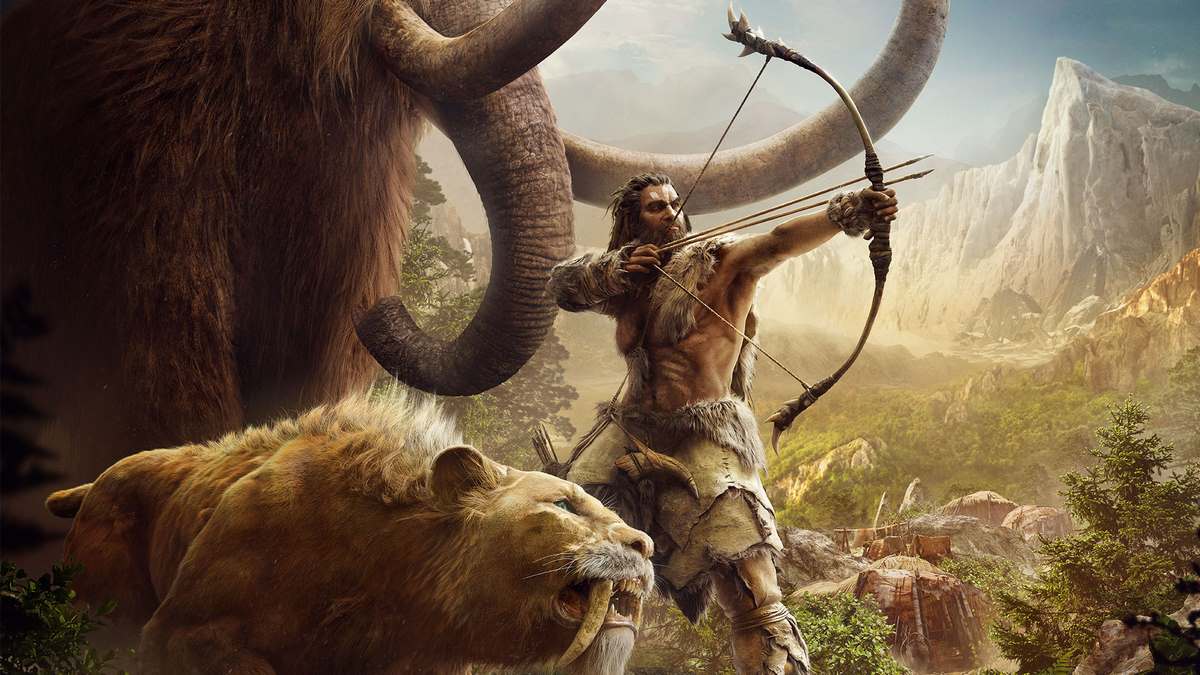Far Cry Primal is an incredible action game set in 10,000 BC, available on PlayStation 4, Xbox One, and PC. Taking place in the Land of Oros—a harsh territory ruled by wild clans and dangerous beasts—the adventure follows the struggles of the Wenja tribe under the guidance of primal instincts embodied by Takkar. The game boasts stunning visuals, yet its story has some shortcomings. Read my full review to find out if Far Cry Primal is worth your time!
In Far Cry Primal, tribes fight for survival against rival clans traveling along Oros’s dusty roads, while saber‑toothed tigers, mammoths, cave lions, and brown bears roam the dense forests of Oros, threatening every living soul.
The prehistoric setting feels authentic, with characters speaking in an ancient tongue that adds to the immersion. You truly sense the lawlessness of this world when Takkar arrives in Oros, free to upgrade his primitive weapons and follow his own path (literally).
Unlike previous entries, Primal skims a deep narrative—yet it cuts straight to the core of exploration. Your goal is clear: recruit warriors to grow the Wenja army and eliminate the rival clan leaders, the brutal Udam and the fanatical Izila.
All dialogue is translated cleanly into English (or your chosen language), brief by design—Primal wants you to uncover its secrets through exploration. Yet exploring Oros isn’t easy: it’s a living world where predators hunt, cannibalistic clans perform gruesome rituals, and mysterious events unfold across tundras and caverns, making every expedition unpredictable.
The map in Primal is vast—though smaller than Far Cry 4’s Himalayas—because you’ll spend most of your journey on foot. Mount tamable beasts only later in the story; early on, walking remains your best way to gather resources and complete side activities in real time.
Despite its Stone Age setting, Far Cry Primal preserves the series’ core. You still liberate enemy outposts and light beacons—Primal’s version of radio towers—to unlock fast travel points.
Skinning animals remains essential, and crafting is more robust than ever. Takkar must forge bows, clubs, spears, and bee‑bombs from raw materials—there are no pre‑made weapons.
However, the downside is the limited variety of craftable weapons. Combat can feel repetitive when you’re forced to rely on essentially the same arsenal throughout most encounters.
Primal introduces dozens of tameable creatures—canines, felines, predators—that fight alongside you or serve as mounts. This beast‑taming mechanic, rooted in Far Cry 2’s concepts, adds a fresh layer of strategy to every skirmish.
To tame an animal, you employ supernatural powers learned from the Beast Master. Once loyal, your companion obeys attack commands, but if it falls in battle, you must heal it with meat or revive it later.
Oros’s dynamic weather truly shines at night. Darkness brings a spike in predator activity, and the thrills of survival intensify as you rely on burning torches for sight. But every torch uses animal fat—so running low on fuel can leave you stranded in the pitch‑black jungle.
Though built on the same engine as Far Cry 4, Primal’s visuals are even more breathtaking. From snowy peaks to lush forests, the open world of Oros dazzles with dense foliage and lifelike detail.
Verdict
- Graphics
- Interface
- Entertainment
- Gameplay
- Features
Summary
In my conclusion, I can say that “Far Cry Primal” reinvents the concepts established by its predecessors to offer an open-world adventure with an exclusive focus on survival (Survival Mode).
The game succeeds in everything it sets out to do, even with a basic and very predictable story. However, Ubisoft proves that the franchise’s formula is still capable of adapting to any environment, whether in primitive forests or in the Himalayan mountains.





















































































